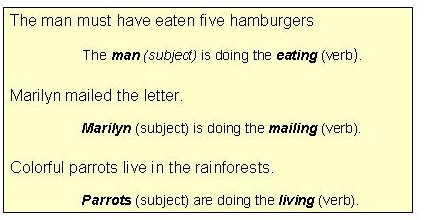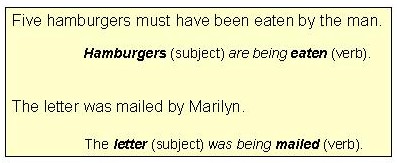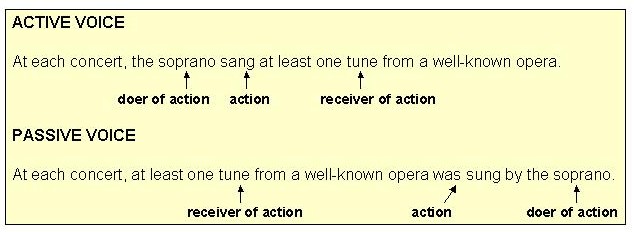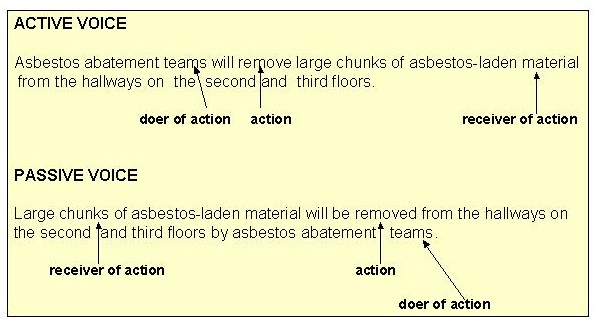Module Overview:
Active voice is used for most non-scientific writing. Using active voice for the majority of your sentences makes your meaning clear for readers, and keeps the sentences from becoming too complicated or wordy. Even in scientific writing, too much use of passive voice can cloud the meaning of your sentences. Sentences in active voice are also more concise than those in passive voice because fewer words are required to express action in active voice than in passive.
Module Objectives:
- Identify the active voice sentence structure (noun-verb-object).
- Appraise the benefits of writing in active voice.
- Identify when passive voice is acceptable.
Active vs. Passive Voice
Active voice
In most English sentences with an action verb, the subject performs the action denoted by the verb (Links to an external site.).
These examples show that the subject (Links to an external site.) is doing the verb’s action.

Because the subject does or “acts upon” the verb in such sentences, the sentences are said to be in the active voice.
One can change the normal word order of many active sentences (those with a direct object (Links to an external site.)) so that the subject is no longer active, but is, instead, being acted upon by the verb – or passive.
Note in these examples how the subject-verb relationship has changed.

Because the subject is being “acted upon” (or is passive), such sentences are said to be in the passive voice.
NOTE: Colorful parrots live in the rainforests cannot be changed to passive voice because the sentence does not have a direct object.
To change a sentence from active to passive voice, do the following:
1. Move the active sentence’s direct object into the sentence’s subject slot

2. Place the active sentence’s subject into a phrase beginning with the preposition (Links to an external site.) by

3. Add a form of the auxiliary verb (Links to an external site.) be to the main verb and change the main verb’s form

Because passive voice sentences necessarily add words and change the normal doer-action-receiver of action direction, they may make the reader work harder to understand the intended meaning.
As the examples below illustrate, a sentence in active voice flows more smoothly and is easier to understand than the same sentence in passive voice.


It is generally preferable to use the ACTIVE voice.
To change a passive voice sentence into an active voice sentence, simply reverse the steps shown above.
1. Move the passive sentence’s subject into the active sentence’s direct object slot

2. Remove the auxiliary verb be from the main verb and change main verb’s form if needed

3. Place the passive sentence’s object of the preposition by into the subject slot.

Because it is more direct, most writers prefer to use the active voice whenever possible.
The passive voice may be a better choice, however, when
- the doer of the action is unknown, unwanted, or unneeded in the sentence
Examples

- the writer wishes to emphasize the action of the sentence rather than the doer of the action
Examples

- the writer wishes to use passive voice for sentence variety.